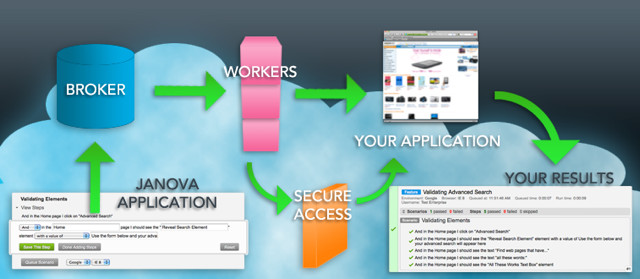Janova, a software development company, released its new automated software testing solution, also called Janova, to allow developers and testers to test the user experience of Web applications using English-based tests that are turned into code by Janova’s technology.
“Janova has predefined methods that describe how a person interacts with a website (click a button, enter text, select from a list, etc.), and has created the technical scripts to be used whenever a Janova user utilizes that specific Web access method,” said Jeff Lusenhop, founder and CEO of Janova.
“The user defines the elements on the screen, assigning them a label and defining in Janova how to access the element. When a user combines an interaction with an element, Janova converts the interaction and element to a script that can be executed.”
Lusenhop explained that the program allows developers use the test-driven development process by matching the English-based requirements to coded tests utilizing the technology of Janova, which adds additional checks for accuracy of code and delivery of requirements.
“Regression tests [are also done] for all the functionality of the code; this is testing that verifies that the entire software product works with the new features,” Lusenhop said.

Janova is built in the cloud, can be hosted internally on private clouds or by Janova, and is accessed via a Web portal, allowing features on a given application to be tested against a variety of OS environments, browsers and under a variety of Web-simulated circumstances. “We dynamically scale the computing power behind the scenes based upon the amount of users we have,” Lusenhop said.
These tests are meant to supplement the tests created by the quality assurance team and allow for quicker, automated testing of the user interface experience, he said.
Batch tests can be created in enterprise and professional editions of the Janova software, to allow for multiple tests to be run per iteration or per program. The program was initially released at the end of September 2010 as a beta to a select few, and is now available in basic, professional and enterprise editions to the general public.





